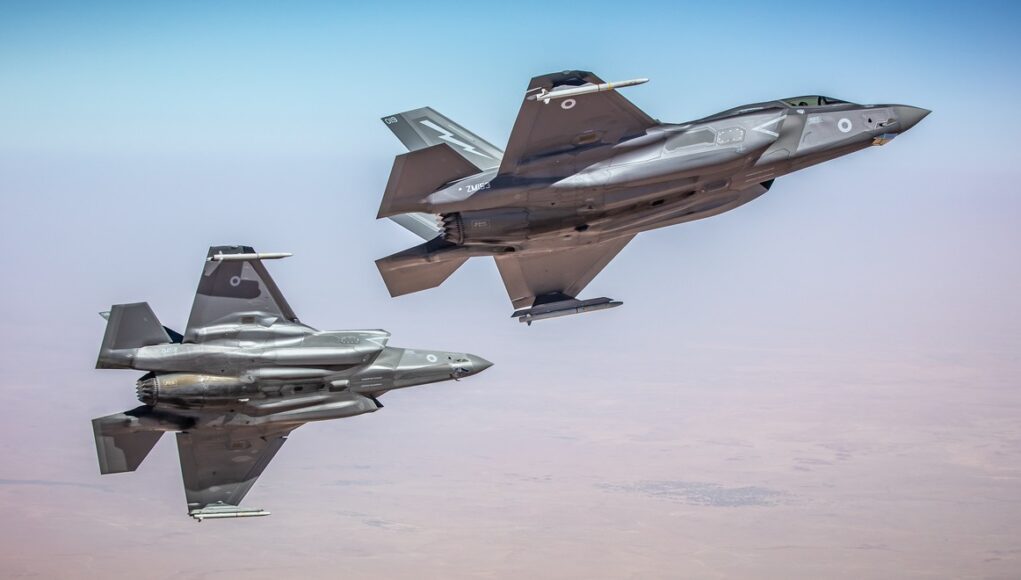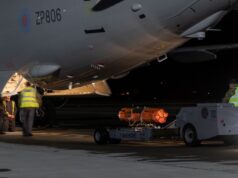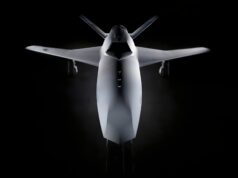Britain’s reliance on the US-led F-35 fighter programme could leave it exposed to technical and strategic vulnerabilities, experts told the House of Lords International Relations and Defence Committee on 29 October.
Speaking before the House of Lords International Relations and Defence Committee on 29 October, Dr Sophy Antrobus of King’s College London said the aircraft’s structure and supply network make it impossible for any one nation to stand apart.
“If any partner nation pulls out of the system, it will not work properly,” she said. “Its interwoven nature means it is not in any nation’s interest, including the US, to limit or ring-fence parts of the programme. It works better with us all working together.”
Antrobus warned that the UK’s smaller procurement volume compared to the US could weaken its influence, noting that “the priority in Washington pushes us further down the pile” and that such imbalances could shape the country’s future access to upgrades and weapons integration.
On the issue of a possible “soft kill switch” in the F-35 software, which some analysts believe could theoretically allow the US to restrict operations remotely, Antrobus said the greater concern was the aircraft’s immense digital complexity rather than political interference. “When you buy an F-35 or anything that is that software-dependent, you are taking the risk that something can go wrong,” she said. “Worrying about it being the US Administration versus anything else is not as big a deal as some have made out.”
She cited research comparing the F-22’s roughly two million lines of code with the F-35’s nine million, noting that so many institutions contribute to its software that “it does not have to be a nefarious US Government, it could just be an incompetent individual.”
Dr Justin Bronk of the Royal United Services Institute agreed that complexity brought risk but stressed that the American testing and evaluation system is the most rigorous in the world. “Even minor faults generate extensive follow-up work because a combat aircraft has to work every time,” he said. “That’s part of why there have been delays, but it also means bugs are fixed rather than deferred.”
Addressing the idea of a software “kill switch,” Bronk said “a hard kill switch does not exist as far as I have been able to gather.” He added that any embedded control feature would be “an enormous vulnerability” for US forces if discovered. A theoretical soft restriction, such as removing access to the maintenance or software backbone, could make operations difficult over time, he said, but it would only occur in a scenario where the US had already withdrawn support across multiple areas.
“In that situation,” he explained, “they would not resupply our munitions or allow us access to their command and control systems. We are so militarily dependent on the United States that concerns about them trying to stop us fighting completely miss the point.”
Instead, Bronk urged policymakers to focus on the UK’s structural reliance on American power. “We should look at the key areas of European security where we depend not just on US support but on America doing our fighting for us,” he said. “Those gaps, such as the suppression of Russian air defences, are easier to fill than building the ability to fight while America is trying to stop us.”














I’m shocked.
US vulnerability is not such an issue if the aircraft is only used for niche roles such as carrier strike and SEAD. These are largely offensive roles which we are extremely unlikely to require unless part of a broad US coalition.
Most of our defence needs are met by Typhoon.
The RAF should limit the buy for F35 for what’s required for carrier strike and SEAD as well as any requirement for tactical nuclear weapon employment.
That can all probably be done by the planned purchase of 12 F35A and 60 F35B.
We can then just increase the Typhoon fleet and expand the acquisition of stand off weapon likes FC/ASW and ACP/CCA style drones to give it more of a stand off attack.
The combination in the air and for SEAD mission of Typhoon and F35 backed by ACP’s is more than enough until Tempest is ready.
Totally agree with you that the UK limit its F35 to 60 B variant frames. I would forego purchase of the 12 A variants and spend that money on Typhoon F4. As I have stated in this forum before, I am of the opinion that the current B variant is an “orphan” model because I suspect Lockheed will exclude this model in its announced gen 5.5 upgrade ( easier to do a super hornet type revision on the A and C variants if B variant is left out),
I am of the opinion that one of the carriers be converted to CATABOR in the 2030/40s midlife upgrade when France or the USA will have new or upgraded carrier borne manned aircraft available or the UK will be in a position developed a carrier capable Tempest.
We have software in Typhoon that is designed and installed in other countries. We shouldn’t limit our capability because of a none story.
The USA is now far removed from the rules based order it built. They’re willing to / actively engaged in using positions of strength to aggressively leverage against, well, everyone, to get what they want.
We in the UK are uniquely exposed to this, perhaps more so than any other nation on earth. It’s time we recognise this and begin the long, difficult and painful journey of de-risking from the USA.
I do wonder, what concessions might any UK govt concede behind closed doors, in order to ensure the continued integrity of our “sovereign” nuclear deterrence? Would you bet everything you own, that the current Whitehouse would not use this position against the UK if a contest were to arise?
That’s the story.
Every indication is that trident missiles will last longer without maintenance than any sitting US president could be in the office (legally)
The UK has control over warheads and fitting and removing them.
Solid fuelled ballistic missiles require very little maintenance. Most of them sit in a silo for their entire life.
The hard limit is on how long the propellant will last which is twenty years plus.
The UK is likely not as dependent on US support to run trident as has been made out.
Hi Jim, I aimed for the most prestigious example to make the point that US dependence is rife throughout our armed forces. I’d also argue that even a 20 year window isn’t sufficient, when we’re talking about our response to Armageddon. What we’re seeing in the USA isn’t just one mans four year term – if only it were. Rather it’s a broader shift towards populism and the apparent tolerance or even appeal of autocracy.
Either way, I maintain my point that de-risking from the US in all domains is not only prudent, but necessary, if we want to avoid being openly extorted on the world stage. This so called “special relationship” which was flimsy at the best of times, is now in tatters, and our PM is one small misstep away from being ambushed and berated in the oval office for the worlds entertainment.
And that my friend – is not cricket.
A gaullist uk is badely needed! 😉
You don’t own the missiles they are leased. The US can stop your independent nuclear capability in about an hour… All the UK nuclear testing has been done in the US for the last 50 years… The missile silos are made in the US…
• They aren’t leased, the U.K. owns a set number of missiles. But they are held and maintained in a common pool.
• It was only after the U.K. conducted its first thermonuclear test that the USA realised the folly and treachery of the McMahon Act was useless and to resume cooperation with its former Manhattan Project ally.
• The missile tubes for the Vanguard class SSBNs were not made in the US. In fact the reverse is true, with the launch tubes for the Columbia class being manufactured by British company, Babcocks. 😆
Guess the last part means we control the US deterrent, according to your logic 😂🤣
Shock, as dependence on US is revealed and nothing is done about it – again.
So whats new?
We can’t integrate anything onto the F-35, we have no software sovereignty or integration authority.
Whose fault is that?
Ours – we demanded software authority early in the programme knowing integration authority was essential to the UKs needs, but backed down when the US said pound sand.
We can’t alone no, but this has always been the case. We are at the mercy of the Block IV (technology refresh 3, a whole new kettle of fish) software Gods getting their act together. Block IV rollout will be 2031 at the earliest, with perhaps the refresh 3 stuff coming sooner, although what will be included in that is up in the air as it “will not be dependent on upgrading the engine, engine core upgrade”.
Worse than that – LM are clearly steering partner nations to LM or US sourced weapons fits, unless that 3rd party weapon fits the USAs need – See NSM
It is a shame the UK did not copy Israel & fit its own internal computer on F-35. Digital autonomy lets Israel quickly fit Israeli weapons & drop tanks on F-35I, without LM delaying tactics.
We don’t have the technical capability to develop that.
Even though Israel did. Even though the UK is the only tier 1 F-35 partner.